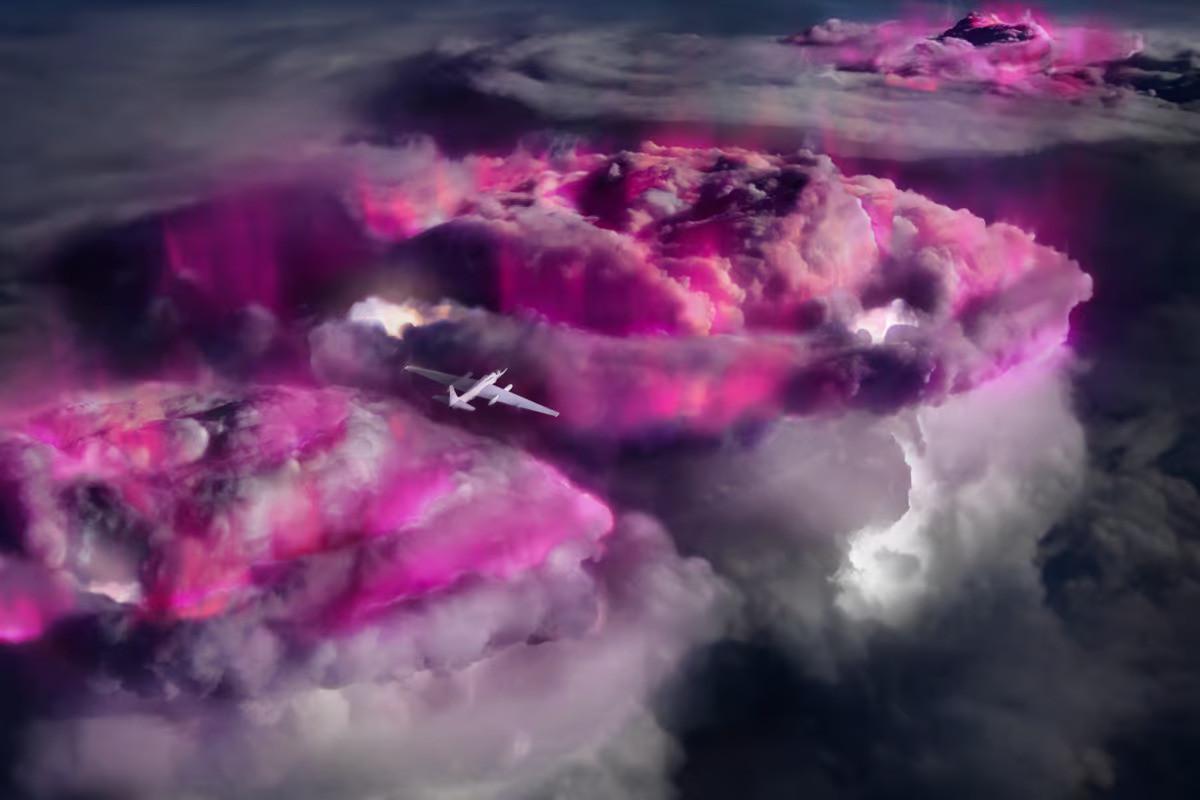 An artist’s impression of the NASA research plane flying over thunderstorm systems to detect gamma ray emissions. NASA/ALOFT team –
An artist’s impression of the NASA research plane flying over thunderstorm systems to detect gamma ray emissions. NASA/ALOFT team –
Lightning strikes obviously carry a lot of energy, but they’re not the most energetic part of a storm. Gamma radiation is produced as well, in bursts called terrestrial gamma-ray flashes (TGFs), which can last up to 100 microseconds, followed by longer afterglows.
Existing data seemed to suggest that TGFs were relatively rare, but previous detections had been conducted by satellites. In a new study, scientists used a NASA research plane to get a closer look. Armed with sensors to measure gamma rays, lightning flashes and microwave emissions, the team conducted 10 flights over storm clouds in the Caribbean and Central America, at an altitude of 20 km (12.4 miles) – just above the cloud tops.
And sure enough, across the whole 10 flights the team observed 96 TGFs – far more than expected. Importantly, only three or four of them were bright enough to be detectable from space, which explains why they seemed so rare previously.
This closer vantage point also revealed new types of gamma emissions that space-based detectors couldn’t pick up. These consist of a series of pulses that last some 2,500 times longer longer than TGFs, earning them the name flickering gamma-ray flashes (FGFs). In all, 24 of these FGFs were detected during five of the 10 flights, and 17 of them were quickly followed by lightning activity.
A third type of gamma emission was also detected during nine out of the 10 flights. These were a kind of low-and-slow glow, which sometimes increases in energy to produce TGFs and FGFs. In one case, the team detected a thundercloud system spanning over 9,000 sq km (3,475 sq miles) that was glowing for at least the full three-hour duration of a flight. The team can’t be sure how long it had been glowing before they started measuring it, nor how long it lasted after they landed.
As for why it happens at all, it seems that the electrical activity in the clouds during a storm produces strong electric fields, which accelerates particles like electrons. When these collide with air molecules, they can set off cascades of other collisions that eventually lead to nuclear reactions. These are detectable as gamma rays and can even produce short-lived beams of antimatter.
There’s still much more we don’t understand about what’s going on in clouds during storms, but the new data suggests that there may be a causal link between these gamma ray glows and the initiation of lightning.
The research was published in two studies in the journal Nature. The team describes the work in the video below.
–
Sources: Duke University, NASA
–























